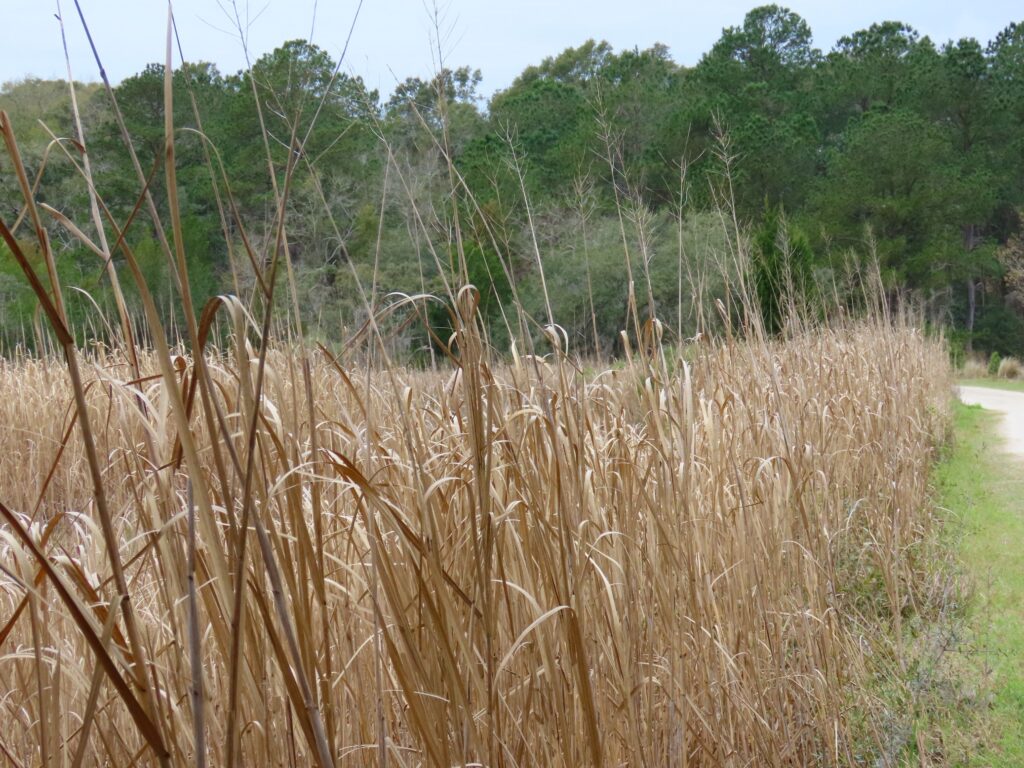




This week for Flora and Fauna Friday, we’re immersing ourselves in a towering grass of our brackish marshes, Big Cordgrass (Sporobolus cynosuroides).
In the waning stillness of the morning, brightness breaks the ice of dawn into day. Khaki Cordgrass calmly crackles, bathed by the winter’s smoldering sun. That soft sizzling is soon silenced by the bowing, blowing breeze upon the brackish bottom. That tranquil tinging muted in a moment by reeds ringing across the rice field, wetland wind chimes in wintertime. Big Cordgrass is a big deal in the brackish tidelands of the Sea Islands. It’s a tall reedy grass growing well over head high with a narrow and circular stem, sparse emerald-green leaves, and an airy, bottlebrush-like inflorescence of upward facing spikes of seeds. In winter, this perennial colony forming plant dies back to its roots but its dried, khaki-tan stems remain preserved and upright for months. When baked in the first light of morning, these dried reeds quietly crackle and pop as the chill of night is warmed from their bones, producing a subtle rain-like tone when its stems shift and strain from thermal expansion, like joints popping after a long night’s rest. Like its salty sibling Smooth Cordgrass (S. alterniflorus), Big Cordgrass is an ecological mainstay in its narrow wetland niche. Big Cordgrass can be found growing in brackish tidal marshes or on the margins, bluffs, and berms surrounding saltwater marshes. Big Cordgrass can tolerate a fair degree of salt but not the pickling brine of straight seawater. It does best on the frontline of the brackish tidal zone, where salt intrusion is regular but not daily. There it can outcompete the more obligate halophytes like Black Needlerush and Smooth Cordgrass but is itself not overtaken by Cutgrass and Cattails. It also carves out a home on tidal creek margins and headwaters, where the flow of freshwater from the uplands are enough to wash the soil free from some of the salt saturation of the tides. Big Cordgrass is an important foundational species in brackish marsh habitats. It provides a bounty of both seed and structure to a variety of hard to see marshland birds, to include American and Least Bitterns, King and Eastern Black Rails, and Seaside and Saltmarsh Sparrows.